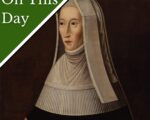
On this day in Tudor history, 31st May 1443, in the reign of King Henry VI, Lady Margaret Beaufort, Countess of Richmond and Derby, and matriarch of the Tudor dynasty, was born at Bletsoe Castle in Bedfordshire.
[Read More...]
On this day in Tudor history, 31st May 1443, in the reign of King Henry VI, Lady Margaret Beaufort, Countess of Richmond and Derby, and matriarch of the Tudor dynasty, was born at Bletsoe Castle in Bedfordshire.
[Read More...]
On this day in Tudor history, 30th May 1593, the Elizabethan playwright and poet, Christopher Marlowe, was fatally stabbed in a house in Deptford Strand, London.
The coroner ruled that Ingram Frizer, who had stabbed Marlowe, had acted “in the defence and saving of his own life”.
[Read More...]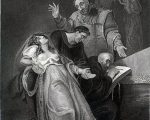
This week’s Monday Martyr is Elizabeth Barton, who was hanged for treason at Tyburn on 20th April 1534, along with Father Edward Bocking (a monk and Barton’s spiritual adviser), Richard Masters (her parish priest), Richard Risby (warden of the Observant Friary at Canterbury) and Hugh Rich (warden of the Observant Friary at Richmond).
Elizabeth had visions and prophecies, and one particular prophecy got her into trouble with King Henry VIII.
[Read More...]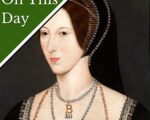
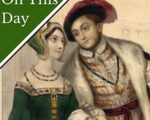
On this day in Tudor history, 28th May 1533, at Lambeth Palace, Thomas Cranmer, the recently appointed Archbishop of Canterbury, proclaimed the validity of the marriage of Henry VIII and Anne Boleyn.
This proclamation was the result of a secret enquiry carried out by the archbishop following the ruling of the special court set up at Dunstable Priory to hear the case for the annulment of Henry VIII’s first marriage. That court dissolved the marriage of Henry VIII and Catherine of Aragon. Convocation had already determined, on 5th April 1533, that the Pope had no power to issue a dispensation for a man to marry his brother’s widow when it was contrary to God’s law.
[Read More...]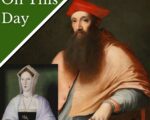
On this day in Tudor history, 27th May 1536, Cardinal Reginald Pole wrote to King Henry VIII from Venice.
He wrote “Was informed by letters, first of your chaplain Mr. Starkey, and afterwards of Mr. Secretary, of your Grace’s pleasure that I should declare to you my opinion touching the superiority of the Pope, with other articles, and state my reasons. I have done so, accordingly, in a book which I send by the bearer. How it will satisfy you, He only knows in whose hand are the hearts of kings. If you wish further information of my purpose, I refer you to the bearer.”
The cardinal attached a copy of his treatise, in which he criticised the king’s annulment and denied the royal supremacy. He was making an enemy and the king would take revenge.
[Read More...]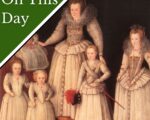
On this day in history, 26th May 1621, Barbara Sidney, Countess of Leicester, first wife of poet Robert Sidney, Earl of Leicester, was buried at Penshurst.
Barbara was born in around 1559 and was the daughter of John Gamage of Coety Manor, Glamorgan,and his wife Gwenllian. After her father’s death in 1584, William Cecil, Lord Burghley, as master of the wards, her uncles Sir Walter Ralegh and Lord Howard of Effingham, and her guardian Sir Edward Stradling all got involved in trying to arrange a marriage match for her. She married Robert Sidney, son of Sir Henry Sidney, Lord President of the Council, and brother of the famous Elizabethan poet Sir Philip Sidney. Robert was also a gifted poet.
[Read More...]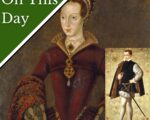
On this day in Tudor history, 25th May 1553, in the reign of King Edward VI, Lady Jane Grey married Lord Guildford Dudley at Durham Place, the Dudley family’s London residence.
Jane was the daughter of Henry Grey, Duke of Suffolk, and Frances Brandon, and granddaughter of Charles Brandon, Duke of Suffolk, and Mary Tudor, Queen of France, and Guildford was the son of John Dudley, Duke of Northumberland, and Jane Guildford, and the grandson of Edmund Dudley, one of Henry VII’s chief advisors.
[Read More...]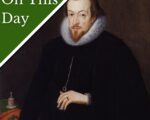
On this day in history, 24th May 1612, courtier and statesman, Robert Cecil, 1st Earl of Salisbury, died at Marlborough in Wiltshire. He had been diagnosed with two large tumours in August 1611 and was on his way home from taking the waters at Bath when he died.
Robert Cecil served Queen Elizabeth I as Secretary of State from 1596 and was retained in that office by James I. He also served James as Lord High Treasurer from 1608. He was still serving in both those offices at his death.
[Read More...]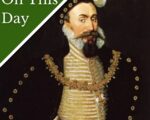
On this day in Tudor history, 23rd May 1547, in the reign of King Edward VI, Henry Grey, 3rd Marquis of Dorset was installed as a Knight of the Garter.
Grey had longed to be a garter knight for years, but even though his father-in-law, Charles Brandon, Duke of Suffolk, nominated him annually, he was not elected. Things changed in Grey’s favour when Edward VI became king.
[Read More...]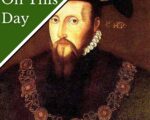
On this day in Tudor history, 22nd May 1537, Edward Seymour, brother of Queen Jane Seymour, was sworn in as a privy councillor.
Edward, who was born in around 1500, had been at court since early adolescence, and he’d risen to become an esquire of the body by 1531.
In 1536, when the king was wooing his sister, Jane, Edward was appointed to the king’s privy chamber. Following Henry and Jane’s marriage, the rewards came thick and fast…
[Read More...]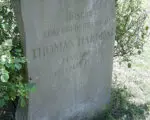
This week’s Monday Martyr is Lollard Thomas Harding.
Harding was in his sixties when he was sent to be burnt at the stake for heresy at Chesham, in Buckinghamshire, on 30th May 1532, in the reign of King Henry VIII. Thankfully, his suffering was cut short when he was killed by a blow to the head when a bystander threw a billet of wood at him.
[Read More...]
On this day in Tudor history, 21st May 1527, King Philip II of Spain was born at Valladolid in Spain.
Philip was the eldest son of Charles V, Holy Roman Emperor, and his wife Isabella of Portugal. His titles included King of Spain, King of Portugal, King of Naples and Sicily, Duke of Milan, and Lord of the Seventeen Provinces of the Habsburg Netherlands. He was also joint sovereign of England following his marriage to his second wife, Mary I, in 1554.
[Read More...]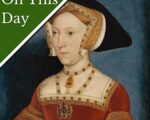
On this day in Tudor history, 20th May 1536, just 24 hours after Anne Boleyn’s execution, Henry VIII became betrothed to Jane Seymour, Anne’s former maid of honour.
The imperial ambassador Eustace Chapuys wasn’t impressed by Jane, describing her as medium height, “no great beauty”, “rather pale”, inclined to be “proud and haughty” and lacking wit. Her age and length of time at court also made him doubt whether she was a virgin! He did like the fact that she was sympathetic to Mary’s cause though – phew!.
[Read More...]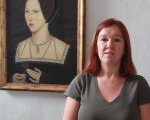
As today is the anniversary of Queen Anne Boleyn’s execution on 19th May 1536, I thought I’d share with you this talk I did a few years ago on Anne Boleyn’s fall.
In it, I examine the roles of Thomas Cromwell and Henry VIII in those bloody events. Did Thomas Cromwell plot all by himself or was he simply his master’s servant? Was Henry VIII ultimately responsible? Why did Anne Boleyn have to die?
[Read More...]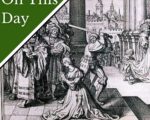
On this day in Tudor history, 19th May 1536, Henry VIII’s second wife, Queen Anne Boleyn, was executed at the Tower of London.
Anne had been found guilty of treason for seducing five courtiers, including her brother, George Boleyn, Lord Rochford, and the king’s friend and groom of the stool, Henry Norris, and plotting with them to kill the king. The men were executed on Tower Hill on 17th May 1536.
[Read More...]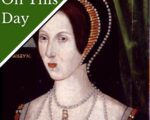
On this day in Tudor history, 18th May 1536, Queen Anne Boleyn, who was all prepared for her execution that day, was informed by Sir William Kingston, the Constable of the Tower, that her execution had been postponed until the following day.
After Kingston told her, Anne replied, “I thought to be dead by this time, and past my pain”.
[Read More...]
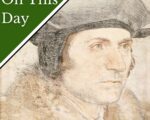
On this day in Tudor history, 16th May 1532, Sir Thomas More resigned as King Henry VIII’s Lord Chancellor.
More, who had been a real father figure to Henry VIII, had held the office since 25th October 1529, following the fall of his predecessor, Cardinal Thomas Wolsey. However, More opposed Henry VIII’s quest for an annulment of his first marriage, and the idea of the king being the supreme head of the church. The final straw for More, was the king’s attack on the clergy, on 11th May 1532, when he suggested they were traitors because of their oath to Rome, and the subsequent submission of the clergy to the king’s demands.
[Read More...]
On this day in Tudor history, 15th May 1536, the trials of Queen Anne Boleyn and her brother, George Boleyn, Lord Rochford, took place at the Tower of London.
Unsurprisingly, they were both found guilty of committing incest and plotting to kill the king, and sentenced to death – see video below. But there was some humiliation for the king when George was handed a note about his sister talking to his wife, Jane Boleyn, Lady Rochford, about the king’s lack of sexual prowess.
[Read More...]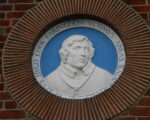
This week’s Monday Martyr is Blessed Hugh Faringdon, born Hugh Cook, Abbot of Reading, who was hanged at the gate of his abbey on 14th November 1539 for treason, for allegedly upholding the supremacy of the pope. He was beatified by Pope Leo XIII on 13th May 1895.
[Read More...]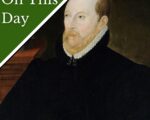
On this day in Tudor history, 14th May 1571, Matthew Stewart, Earl of Lennox and regent to the young King James VI of Scotland, held the “Creeping Parliament” in Edinburgh.
It was called the Creeping parliament because members had to crawl on their hands and knees into the Canongate to avoid being shot by the supporters of the abdicated Mary, Queen of Scots, who held Edinburgh Castle.
[Read More...]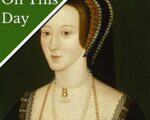
On this day in Tudor history, 13th May 1536, in the reign of King Henry VIII, Queen Anne Boleyn’s royal household was broken up and her staff discharged.
The king’s second wife, who was imprisoned in the Tower of London at the time, hadn’t even been tried yet. However, Sir Francis Weston, William Brereton, Sir Henry Norris and Mark Smeaton had been found guilty of high treason, for sleeping with her and conspiring to kill the king with her, so she had no chance of being found innocent.
[Read More...]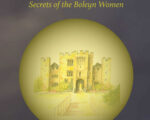
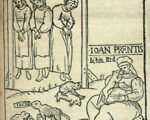
This week’s treat from the Tudor Society archives is a fascinating talk from historian Kate Cole on the witches of Elizabethan and Stuart Essex.
[Read More...]
On this day in Tudor England, 12th May 1537, John Hussey, 1st Baron Hussey of Sleaford, Chief Butler of England, was charged with treason.
Hussey, who was born 1465/6 had been appointed Chief Butler of England in 1521 and also served as a Member of Parliament, sheriff of Lincolnshire and steward to the Bishop of Lincoln. He served Henry VIII’s eldest daughter, Mary, as her chamberlain and his second wife, Anne, was one of Mary’s ladies. Anne actually ended up in the Tower of London for a short time after referring to Mary as “Princess” rather than “Lady” after Mary had become illegitimate by Act of Parliament.
[Read More...]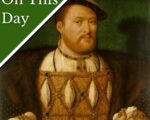
On this day in Tudor history, 11th May 1532, Henry VIII suggested that the English clergy were traitors.
Chronicler Edward Hall records that Henry VIII sent for the Speaker of the House of Commons and 12 members of the House of Commons, “havyng with hym eight Lordes”, and while holding a copy of the bishops’ oath to Rome
[Read More...]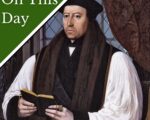
On this day in Tudor history, 10th May 1533, in the reign of King Henry VIII, Thomas Cranmer, Archbishop of Canterbury, opened a special court at Dunstable Priory in Bedfordshire.
The court’s job was to rule on the validity of Henry VIII’s marriage to his first wife, Catherine of Aragon.
[Read More...]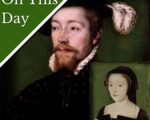
On this day in Tudor history, 9th May 1538, King James V of Scotland married Marie de Guise, or Mary of Guise, by proxy.
James V was the son of King James IV of Scotland and Margaret Tudor, eldest daughter of King Henry VII, and Marie was the daughter of Claude, Duke of Guise, and Antoinette of Bourbon. They’d both been married before. Marie had been married to Louis II of Orléans, Duke of Longueville, who died after less than 3 years of marriage, and James had been widowed just months after his marriage to Madeleine of France.
[Read More...]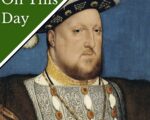
On this day in Tudor history, 8th May 1539, in the reign of King Henry VIII, English troops mustered between Whitechapel and Mile End and then marched through the City and Westminster to St James’s, where the king reviewed them.
This muster was in response to the war panic caused by Francis I and Charles V signing the Peace of Toledo.
[Read More...]